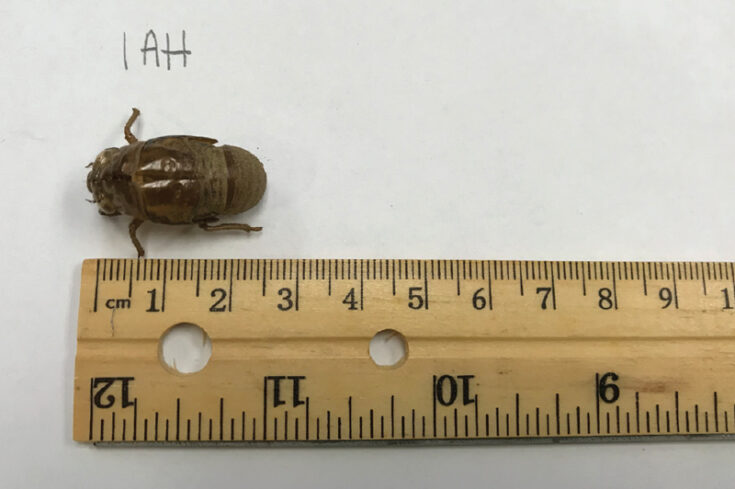Secret Agents

Investigating Insect Vectors
In this lesson, students investigate insects that live in mangroves. Throughout the lesson, students learn how to build an insect trap, deploy it, and collect and analyze the insects caught in the trap. Additionally, students learn how to randomly sample mangrove leaves, categorize the types of insect grazing present, and calculate the percentage of the grazed area on the leaves. This lesson gives students an opportunity to participate in citizen science by uploading their data to the Mangrove Detectives website. This information will help scientists document all of the insects living in the mangroves and the types of insect grazing on mangrove leaves.
Lesson Plans
Lesson Video
Upload Your Class Data!

Education Standards
Ocean Literacy Principles and Fundamental Concepts (Grades 9-12)
- Principle 5.B.11: Ocean ecosystems are connected to each other in a macro food web. Over time,
organisms move from one ecosystem to another as they grow, migrate, and die. Changes in an
ecosystem or an organism may have unpredictable effects on other ecosystems. - Principle 6.E: Achieving sustainability of the diverse ecosystems and resources in the ocean depends
upon collective and individual action based on scientific research and exploration. - Principle 7.B.5: Exploring the ocean involves global participation because there is only one ocean that
connects and sustains all life.
Glossary
Chewing – Part of tissue and veins are absent on the leaf. This is caused by insects that have mandibles or jaws to bite, tear, and chew food.
Citizen Science – The practice of public participation and collaboration in scientific research to increase scientific knowledge.
Classification (biological) – A systematic arrangement of plants and animals according to their presumed natural relationships.
Disease – A condition of a plant or animal that impairs normal body structure or function.
Geographic Location – A position on Earth defined by two coordinates, longitude and latitude.
Geographic Positioning System (GPS) – A navigational system using satellite signals to fix the location of a receiver on or above the earth’s surface.
High Tide – The maximum height reached by a rising tide.
Host – An organism that supplies food, resources, and acts as a substrate for a disease.
Insect – Any class of arthropods with well-defined head, thorax, and abdomen, only three pairs of legs, and typically one or two pairs of wings.
Leaf Galls – Abnormal growth or swelling on the external tissue of the leaf. This is caused by insects or mites feeding or laying eggs.
Leaf Mine – Absence of leaf tissue often forming linear patterns on the leaf. This is due to larval insects that bore into the leaf tissue and feed on it.
Low Tide – The minimum height reached by a falling tide.
Mangrove – Tropical maritime trees or shrubs that send out many prop roots and form dense masses important in coastal land building and as foundations of unique ecosystems.
Observation – An act of recognizing and noting a fact or occurrence often involving measurement with instruments.
Order (taxonomy) – A category of taxonomic classification ranking above the family and below the class.
Pathogen – Infectious agent that causes disease.
Random Sampling – A sampling method in which samples are selected in such a way that each observation has an equal chance of selection.
Red Mangrove – A true mangrove having red wood and numerous prop roots like those in the genus Rhizophora.
Skeletonization – Absence of leaf tissue but the veins of the leaf remain. This is caused by insect feeding.
Stippling – Small whitish colored dots or specs caused by insects sucking out the leaf’s sap using their piercing mouthpart.
Taxonomy – The study of the general principles of scientific classification.
Temperature – The degree of hotness or coldness measured on a definite scale.
Trap – A device for taking game or other animals.
Vector – An animal able to transmit a pathogen.
Wind Speed – How fast air moves past a certain point.
All definitions are from:
- Merriam Webster Dictionary
- NOAA
- Agrios, G.N. Plant Pathology. 5th edition.
Photo credits
From left to right in the top banner photo collage:
- Mangrove Skipper (Phocides pigmalion) By Bob Peterson [CC BY-SA 2.0] via Wikimedia Commons.
- Leaves with stinging nettle caterpillar feeding damage By Forest & Starr [CC BY 4.0] via Starr Environmental.
- Leaves with native Omiodes blackburni moth chewing By Forest & Starr [CC BY 4.0] via Starr Environmental.
